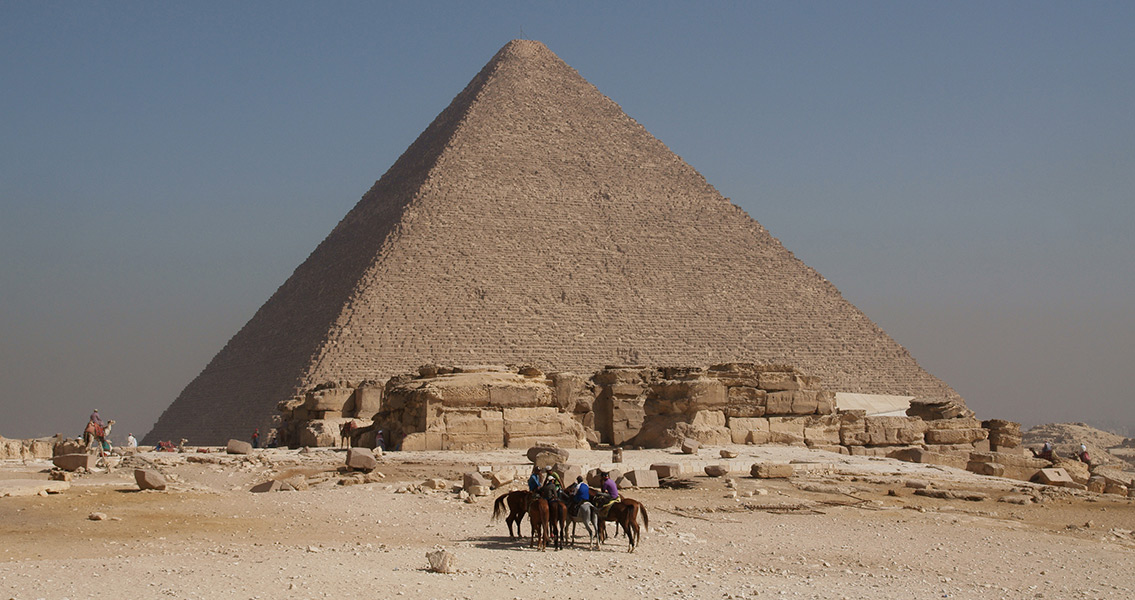<![CDATA[The Great Pyramid of Giza is a Wonder of the Ancient World, but it's also just a little skewed because of a minute mistake made by the builders during construction, so says new research completed by engineers and Egyptologists. Specifically, the team has determined that the pyramid’s west side is a little bit longer than its east side, meaning the base isn’t square. When first constructed, the pyramid was completely covered in a limestone casing which is now mostly gone, having been reused over the centuries for other construction projects. Without this casing, it’s been difficult for scientists to get accurate measurements of the pyramid as it stood originally. The exact size and alignment of the Great Pyramid has been pondered and pursued by archaeologists, engineers, scientists and even mystics for hundreds of years. Researchers measured the edges and platform of the Great Pyramid to determine what one corner might have looked like at the time of construction, and found what they referred to as a “corner socket” or a cut in the rock (with no known purpose). To calculate the lengths of the original sides of the pyramid, Egyptologist Mark Lehner with the Ancient Egypt Research Associates (AERA), a co-leader of the project along with engineer Glen Dash with the Glen Dash Research Foundation, organized a search for all of the surviving casing stones with edges that still had contact with the platform the Great Pyramid was constructed on. The team also looked for any marks left on the platform that could provide clues to determine where the edges lay. They identified 84 points in total, all along the original edges of the pyramid, which were then marked on the grid system that AERA has been using to map the Giza Plateau for the past 30 years. Using linear regression analysis, a statistical method where the relationships between variables are modeled using linear predictor functions and the unknown model parameters are estimated from the data, they were able to determine the lengths of each side. What they found was that the east side of the pyramid originally measured between 755.561 and 755.817 feet (230.295 to 230.373 meters), while the pyramid’s west side originally measured between 755.833 and 756.024 feet (230.378 to 230.436 m). The conclusion then, is that at the very most the east side was 5.55 inches (14.1 cm) shorter than the west side, and although that would have left the pyramid not quite a perfect square, it's still an amazing level of precision for a monumental structure built over 4,500 years ago. Built for Pharaoh Khufu, the Great Pyramid of Giza is the oldest and the largest of the three pyramids on the Giza Plateau, which borders what is now El Giza, Egypt. It’s also the oldest of the Seven Wonders of the Ancient World, and the only one which remains largely intact. "The data show that the Egyptians possessed quite remarkable skills for their time," Dash writes in the report. "We can only speculate as to how the Egyptians could have laid out these lines with such precision using only the tools they had." Researchers will continue to analyze the data they’ve gathered to learn more about the construction and design of the Great Pyramid, as well as the technology and tools they used to achieve such a high level of precision. ]]>
Measure Twice, Cut Once. Pyramid Building is no Exception
